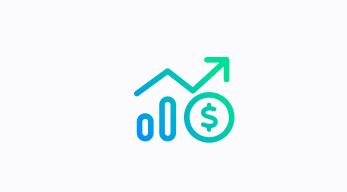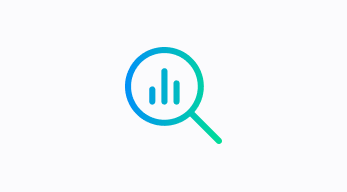
News and analysis
24-hour breaking news, market commentary and industry analysis from across the globe
Gain a clear view of your markets in real time
Capitalise on opportunity, with unbiased news coverage and expert analysis of the critical events shaping your markets. Inform your decision-making and plan with confidence, with analysis of the worldwide market dynamics impacting commodity markets and the broader industry, from our global team of over 200 pricing editors and a dedicated news team.
Stay one step ahead of your market, with mobile and email alerts for your chosen commodity and instant access to news and analysis via our customisable dashboard on ICIS Clarity™.
RELATED LINKS:
Chemicals news and analysis
Confidently plan ahead, with high-value proprietary content covering over 300 commodities markets including plastics, biofuels and solvents. Gain a complete picture at a glance, with 500 standalone chemicals news stories and pricing analysis each week.
React faster to shifting markets, with news coverage of spot transactions, contract settlements, market shifts, force majeures, production issues, outages, planned disruptions and more. Twice-daily snapshots of major commodity prices in each region, plus a weekly feedstocks summary and week-ahead calendar story help you keep ahead of fast-moving commodity markets.
Understand the wider global landscape with in-depth analytical commentary covering corporate activity, new projects, financial markets, regulation and legislation, plus the environmental, trade and economic issues driving chemical industry strategy.
Chemicals news and analysis is available to all subscribers. For access to ICIS Chemical Business, we offer a subscription to Global News + ICB.
Global News + ICIS Chemical Business
(ICB)
Keep abreast of dynamic markets with unlimited access to ICIS chemicals news across all markets and regions, plus ICIS Chemical Business (ICB), the leading magazine for the chemicals industry.
Capitalise on opportunities as they happen, with a dedicated 24-hour news channel and mobile or email alerts.
Gain a deeper understanding of the chemicals landscape with ICB, the weekly online magazine offering unique insights on chemical industry strategy, plus annual features including the ICIS Innovation Awards, CEO of the Year, Top 40 Power Players, Top 100 Chemical Companies, Top 100 Chemical Distributors and Top M&A.
Learn about the trends driving chemicals markets with coverage of major trade association events such as AFPM, EPCA, APLA and Fecc, and broaden your market knowledge with two chemicals product profiles per issue, featuring an overview of uses and prices plus supply and demand, plants, capacities and outlook.
Energy news and analysis
In the transition to a low-carbon economy, stay ahead of rapidly evolving energy markets with ICIS news and analysis on natural gas, power and renewables, crude oil, LNG and hydrogen.
Trade confidently, with daily market commentary on price movements and unbiased coverage including in-depth, data-driven analysis of the trends shaping energy markets. Inform your decision-making with outlooks and insight on geopolitical events, changing fundamentals, new policies and regulation.
Topics regularly covered by our dedicated team of market reporters include the evolution of gas and LNG in the supply mix, plus regular analysis of locational spreads and how the various energy commodities are influencing one another.
ICIS news and analysis are a standard part of the subscription to your chosen commodity, in addition to benchmark price assessments and indices.
Why subscribe to ICIS News and analysis?

React quickly to opportunity
Respond to events as they happen, with instant access to news and analysis covering market-moving events including outages and force majeures.

Optimise profitability
Remain competitive and preserve margins, with coverage of market-moving events and the longer-term trends driving pricing.

Inform decision making
Benefit from an expert market view and unbiased news and analysis from reporters embedded in global commodity markets.

Minimise risk
Limit exposure and plan confidently, with a clear view of market-moving events and insight into the factors driving longer-term trends.
ICIS News
Australian Agrimin advancing Mackay Potash project towards final investment decision
HOUSTON (ICIS)– Producer Agrimin Limited said their Mackay Potash project in Western Australia is now advancing towards a final investment decision. In an update on quarterly activities the company said it continues to focus on their project which is planned to be able to manufacture standard and granular sulphate of potash (SOP) products. Current activities include efforts towards project funding and strategic partnerships, design works, environmental approvals as well as product marketing. The Mackay project is set to undertake sustainable extraction of brine from Lake Mackay using a network of shallow trenches, which will be transferred along trenches into a series of solar evaporation ponds. Raw potash salts will crystallize on the floor of the ponds and be collected by wet harvesters and pumped as a slurry to the processing plant that will refine harvested salts into high quality finished SOP ready for direct use by customers. SOP volumes will be hauled by a dedicated fleet of road trains to a purpose-built storage facility at Wyndham Port. At the port it will be loaded via an integrated barge loading facility for shipment to customers. The project’s definitive feasibility study (DFS) was completed in July 2020 and demonstrated that once in operation it could be the world’s lowest cost source of seaborne SOP. The independent technical review of the DFS was completed in April 2021. The company has signed three binding offtake agreements with Sinochem Fertilizer Macao Limited for the supply of 150,000 tonnes/year, Nitron Group for 115,000 tonnes/year and with MacroSource for 50,000 tonnes/year. Agrimin has already completed site-based testing for the salt harvesters, geotechnical sampling and for the sealed haul road. Additionally, the company has worked with its proposed power contractor to refine the project’s site power station design which has resulted in a hybrid diesel, solar, wind and battery solution. Regarding environmental clearance the company said the project is being assessed by the Western Australian Environmental Protection Authority (EPA) and during the quarter it resubmitted the environmental impact assessment response, which included revised management and monitoring plans. It is still expected that the EPA approval will come during the second half of 2024. Agrimin said it is also progressing other secondary approvals, licenses and agreements which included coverage for mining operations project safety and water regulations.
26-Jul-2024
Czech Republic updates its hydrogen strategy to align with new policy developments
The infographic for this story was initially developed by ICIS hydrogen policy and regulation analyst Aayesha Pathan LONDON (ICIS)–On 17 July the government of the Czech Republic approved an update to its hydrogen strategy. The update follows a wide array of European policy developments such as targets for the use of renewable hydrogen in transport and industry, as well as alternative fuels infrastructure regulation on hydrogen refuelling stations. The strategy indicates a three phased-approach to the development of the market, focusing initially on localized production and offtake through hydrogen valleys, moving towards large-scale hydrogen imports towards the end of the decade and into the 2030s. ICIS has produced the following infogram to reflect some of the core principles of the strategy update.
26-Jul-2024
VIDEO: Eastern Europe PET bale bullishness eases in R-PET market
LONDON (ICIS)–Senior Editor for Recycling Matt Tudball discusses the latest developments in the European recycled polyethylene terephthalate (R-PET) market, including: Eastern Europe bale bullishness eases Some northwest Europe flake sellers' views on August offers vary Swedish deposit return scheme (DRS) introduces R-PET cap from May 2025
26-Jul-2024
INSIGHT: Venezuela’s petchems may finally get a chance – but unlikely to be under Maduro
LONDON (ICIS)–Venezuelans go to the polls on Sunday with the hope of a free and fair election, in which case President Nicolas Maduro is widely expected to lose office in a country where the economy has been battered by years of mismanagement, corruption, and US sanctions. In the crude oil-rich country – Venezuela holds the world’s largest reserves – petrochemicals could naturally develop given the raw materials advantage. Back in the 1990s, with crude oil output at its peak, petrochemicals were tilted as a growing and booming sector in the country. The industry never took off. Since 2001, Venezuela has been run by the socialist PSUV party, first under the late President Hugo Chavez, who died in 2013, and later under his appointee successor, Nicolas Maduro, who won an election in 2018 widely seen as not free: the PSUV-led coalition won 256 out of 277 seats in the National Assembly. Venezuela’s demise has been rapid and deep: practically no institution in the country has been spared from the PSUV taking over it, and the election on Sunday has several times been postponed as Maduro tries to cling onto power for as long as he can. The powerful military are still for the most part rallying behind him. A state of terror has been the norm in the past few years, and the economy took a turn for the worse in the late 2010s and pushed around seven million Venezuelans to flee, mostly to neighboring countries or, those with the means, to countries such as the US or Spain. Sunday’s election is momentous because it has been tilted as one in which Maduro could allow a free vote – but many still fear that is not his nature. But independent opinion polls have consistently showed him trailing behind the unity opposition candidate, Edmundo Gonzalez, a 74-year-old diplomat who managed to avoid, like other opposition candidates before him, being banned from running. PETROCHEMICALSBefore North America renewed its status as a global energy power with the advent of the shale gas boom, crude oil derivatives were – and continue to be in most Latin American countries – the only game in town when it comes to petrochemicals raw materials. In the past 30 years, crude oil output peaked in 2000 at slightly more than 3 million barrels/day, stayed mostly stable under Chavez’s rule at around 2.5 million barrels/day, but has been on a downward trend since, according to data from the US Energy Information Administration (EIA). VENEZUELA CRUDE OIL PRODUCTIONJanuary 2000-July 2023 Million barrels/day Source: US’ Energy Information Administration Currently, Venezuela produces around 700,000 barrels/day. The reserves continue to be there, underground, but the facilities to extract that wealth have also been victims mismanagement and have had little maintenance. In 2023, as the world’s energy sector reeled from Russia’s attack against Ukraine, the US softened some of its sanctions on Venezuela – its crude oil was now more needed than ever – and signed the so-called Barbados Accords, which would imply lifting sanctions in exchange for a free and fair electoral process. Maduro backtracked from his word earlier in 2024 – as he kept banning candidates from the opposition to run in the process – and the US reimposed the sanctions which, in the abyss the country is, are used by the government as the excuse for the country’s malaise. Amid this backdrop over the past decades, the 1990s talk about petrochemicals being a sector which could potentially be a powerful exporter of downstream materials to the rest of the world has all but died. In June, the Venezuelan government said it was mulling building production facilities for petrochemicals and fertilizers together with Turkey’s industrial conglomerate Yildirim, but without giving much detail about timelines or budgets. However, such deals have been signed before and nothing came to fruition out of them. Yildrim had not responded to a request for comment at the time of writing. Meanwhile, in an interview with ICIS in May, an executive at chemicals distributor Manuchar – Belgium-headquartered but focused on emerging markets, with strong presence in Latin America – told the sad fate the company was victim of in the late 2010s. By then, the economy worsened sharply and, with it, security – or the lack of it, rather – created a dangerous country to live in, from Caracas to the provinces. The government’s terror state has included paramilitary groups which have had little regard for their own people. Most of Manuchar’s employees fled the country while they still had the means, and the human resources problem forced the company to basically idle all its facilities there, which remain dormant to this day, said Manuchar’s head for South America, Stefan Van Loock “We still have a legal entity in Venezuela, although it is dormant, and we do not have any sales there since the end of the 2010s. During our last months there, the situation had become untenable: we could not import materials, there were hardly any dollars available, so even if you got the imports, you could not pay for them most times…,” he said. “It was also becoming a human resources problem. I saw many Manuchar colleagues resign: ‘I cannot stay in Venezuela any longer, it has become too dangerous, and I am leaving’. It was a combination of all those factors that made us decide to wind down our operations there. We can only hope things improve.” It is interesting to read this piece published on ICIS in 2013 when Chavez died. At the time, there were still hopes petrochemicals could be developed as the country’s crude oil sector was still worth the name. Little we knew how much the country would quickly deteriorate in the next five years, although the article already hinted at constrains which would only become much bigger later. “Venezuela potentially could attract significant petrochemical industry investment although major industry players have tried and failed in the past to establish footholds in the country,” the article’s author, ICIS expert Nigel Davis, wrote at the time. “State-controlled producer Pequiven has plans to nearly triple its plastics production capacity to 1.86 million tonnes/year in 2016 from 694,000 tonnes/year, although its ability to do so is questioned against the backdrop of feedstock, power, and financing constraints.” And looking further into the archives, even with Chavez in power, companies across the world such as major ExxonMobil wanted to tap into Venezuela’s petrochemicals. In this agreement from 2004, the US energy major and domestic producer Pequiven was mulling a 50:50 joint venture to build a $2.5-3 billion petrochemicals complex – once again, it never got to break ground. HOPE LAST THING TO LOSEMillions of Venezuelans abroad are following the electoral campaign and, for the most part, are hoping their compatriots at home go and vote em masse on Sunday: the polls have consistently and overwhelmingly showed Maduro behind, so if a free election is held, the Chavismo may be coming to and in a few months. The structures it leaves behind will take years to dismantle, anyway, and success in building a fairer and freer Venezuela is not guaranteed. Even this week, as he sees his position threatened, Maduro rallied supporters with a violent rhetoric which raised alarms across Latin America: he said that if his party does not win the election, there could be a bloodbath. Even Brazil’s President Luiz Inacio Lula da Silva, normally shy in openly criticizing Maduro as he has a worrying tendency to flirt with far left and authoritarian leaders in the region, was blunt about his feelings. "I was shocked by Maduro's statement that if he loses the election, there will be a bloodbath … Maduro has to learn that when you win, you stay; when you lose, you leave and prepare to run again in the next election," said Lula, quoted by Brazil’s public news agency Agencia Brasil. Lula has sent to Venezuela his personal adviser on foreign policy, Celso Amorim, as part of international delegations who are to be observers in the election. Jose Marquez, a Venezuelan journalist exiled in Buenos Aires, said Sunday’s election could be the last chance to put Maduro out of office, calling on his compatriots to vote em masse against Maduro. “There are people who emigrated who are right now traveling to Venezuela just to vote on Sunday. The fact that there are people in the country who decide not to vote, perhaps in the last opportunity to remove Maduro from power, is disappointing but, above all, very sad,” said Marquez. Front page picture: Facilities operated by PDVSA Source: PDVSA Insight by Jonathan Lopez
26-Jul-2024
BASF sees slowing electric vehicle sector, pauses Tarragona refinery plans
LONDON (ICIS)–BASF is moving to “de-risk” its exposure to the electric vehicles sector in response to slowing market dynamics, CEO Markus Kamieth said on Friday, pausing or deciding against several investments connected to the industry. Take-up of electric vehicles has slowed in most markets other than China, Kamieth said, prompting the company to shift strategy, with new capacities added only where BASF has obtained long-term offtake agreements. “We are confident that the trend toward electric vehicles will continue and that battery materials remain a significant growth opportunity for the chemical industry,” Kamieth said, speaking at a press conference at BASF’s Ludgwigshafen, Germany, headquarters. “However, recent dynamics have changed, and the market penetration of electric vehicles has slowed down significantly outside of China, as shown by a number of announcements by companies in the e-mobility value chain,” he added. The company decided against proceeding with a mooted nickel-cobalt refining complex in Indonesia last month, on the back of shifting nickel market dynamics that are likely to make long-term supply of battery-grade material easier to source. “The supply options have evolved and with that BASF’s access to battery grade nickel. This decision will significantly lower future capital requirements,” Kamieth said. Kamieth, who became CEO of the company in April this year, also moved to pause work on a proposed commercial-scale electric vehicle battery recycling metal refinery at its Tarragona, Spain, complex. To be based on technology developed and tested at BASF’s Schwarzheide, Germany, refinery and with a potential investment range of €500 million to 700 million, the company announced that the project was under consideration in February. Uncertainty also continues at BASF’s Harjavalta, Finland, precursor cathode active materials (PCAM) plant, which has been locked in a cycle of granted environmental permits that are then overturned on appeal. The company recently obtained fresh operation permits for the site, but those could also be overturned, according to Kamieth. “A few weeks ago, we received the approval to operate the site as requested,” he said. “The proviso is that there can be protests against this approval again.” The project, which was yet to receive final investment decision, will remain on hold “until cell capacity build-up and the [electric vehicle] adoption rate in Europe regain momentum,” Kamieth said. The current shift is “a short-term stretching of a growth curve that will inevitably be very large”, he said, due in part to the investment step-changes required in fast-scaling markets that regulatory or investment fears can delay. “We believe that the trend towards electromobility as the powertrain technology of the future is still valid. We also believe that the growth in battery materials is going to be very substantial, and the biggest growth opportunity for that probably right now exists in the chemical industry,” he added. Thumbnail photo source: Shutterstock
26-Jul-2024
BLOG: Petrochemicals three years from now: A shrinking global market?
SINGAPORE (ICIS)–Click here to see the latest blog post on Asian Chemical Connections by John Richardson. Earlier this week I suggested that there would be no end to the petrochemicals downcycle until 2026. But what if this isn’t just a normal downcycle? What if we see no return to the old petrochemical market conditions because of long-term shifts in the global economy due to the end of the China “economic miracle”, ageing populations in most of the world, the sustainability push and the impact on economies of climate change? Might artificial intelligence lead to such a large loss of employment that petrochemicals demand growth takes a further hit? In as little as three years’ time, in handy bullet points, this is what the petrochemicals world could look like: There is sufficient petrochemical supply already available to meet demand as global demand is shrinking. As China is said to be some 45% of global petrochemicals and other manufacturing capacity, and because it is so plugged into global supply chains, this is one of three locations where we are seeing some petrochemicals capacity growth. China is adding more capacity, where it can find sufficiently competitive feedstocks, for supply security reasons. The other locations are the Middle East because of its feedstock advantages, now improving because of more natural-gas liquids discoveries, and the US where government policy continues to support manufacturing. Major consolidation is taking place elsewhere to accommodate this new supply and shrinking demand. Petrochemical plant closures are taking place in Europe, South Korea, Singapore, Japan, and possibly even Southeast Asia. When electrification of vehicles took off, excitement began over petrochemicals demand replacing lost oil demand into transportation fuels. Good look with that idea as petrochemicals demand is, as mentioned, actually shrinking. Can you afford just one scenario, one plan? No, of course. Everything points to a much more ambiguous future than the comfortable and predictable petrochemicals world see enjoyed during the 1992-2021 Supercycle. Editor’s note: This blog post is an opinion piece. The views expressed are those of the author, and do not necessarily represent those of ICIS.
26-Jul-2024
Typhoon Gaemi makes landfall in southern China; hits port operations
SINGAPORE (ICIS)–Typhoon Gaemi slammed into Fujian province in southern China on the evening of 25 July, bringing heavy rains as it continues to move inland on Friday, with the strong downpour expected to last three days. At 06:00 local time (22:00 GMT), Gaemi has weakened into a tropical storm and is centered at Yongtai County in Fuzhou City, according to China's Meteorological Administration (CMA) in its latest update. Gulei, which is a major chemical production site in Fujian, is not in the direct path of Typhoon Gaemi. No disruptions to production were reported. According to China's CCTV state news channel, Gaemi struck Fujian province at 19:50 local time on 25 July and is projected to cause widespread heavy rainfall across the country as it tracks northwest path. An orange typhoon warning has been issued, the second-highest level in China's four-tier warning system. The storm is expected to pass through Jiangxi province and continue to move north, gradually weakening in intensity. Heavy rains and strong winds are expected to batter eastern China from 26 to 27 July, with coastal areas and the East China Sea forecast to experience gale-force winds. Authorities in Fujian province initiated a mass evacuation, relocating more than 150,000 people from vulnerable areas ahead of Gaemi's arrival. Transportation services across the region have been severely disrupted, with train services suspended in parts of Fujian and most flights canceled at Quanzhou Jinjiang International Airport. Schools and offices have also been shuttered in many parts of Fujian province. The impact of Typhoon Gaemi has extended beyond Fujian, with Zhejiang province experiencing ferry suspensions and flight cancellations. Guangdong province has also canceled many eastbound train services in anticipation of the storm's arrival. PORT OPERATIONS AFFECTED Numerous ports along China's eastern seaboard have been closed, ferry services halted, and vessels ordered back to shore, according to crisis management firm Crisis24. The berthing of chemical and oil vessels in Ningbo is being controlled due to safety or environmental concerns, according to a shipping broker. There are restrictions in place for vessels mooring in Ningbo, possibly due to congestion or maintenance, the broker said. Vessels navigating the south channel of Zhangjiagang port must have a freeboard of more than four meters due to shallow water or strong currents, according to the broker. The north channel of Zhangjiagang was closed due to strong winds that occurred early on 25 July, causing safety concerns or difficulties for navigation, the broker said. Dense fog was also present in the Dalian area, causing navigation difficulties or reducing visibility, according to the broker. In Taiwan, the southern port city of Kaohsiung was particularly hard hit by Gaemi, with meteorologists reporting 135 centimeters (53 inches) of rainfall and extensive flooding after it made landfall shortly before midnight on 24 July. Kaohsiung is home to two major oil refineries belonging to Formosa Petrochemical Corp (FPCC) and CPC Corp that are connected to downstream petrochemical facilities. There have been no immediate reports of major disruptions to petrochemical production facilities in Kaohsiung. Meanwhile, operations at the Mailiao port are expected to resume on Friday after a three-day shutdown. The port is operated by Taiwanese major Formosa Petrochemical Corp (FPCC) which primarily serves the company’s Mailiao refinery and petrochemical complex. Taiwan's major petrochemical complexes are in Toufen and Mailiao in the northwest; and Ta-sheh and Linyuan in Kaohsiung City in the south. Separately, a Philippine-flagged oil tanker carrying 1.4 tonnes of industrial fuel oil sank amid inclement weather on 25 July, prompting fears of an oil spill. The MT Terra Nova sank near Lamao Point in Limay, Bataan, a province northwest of the capital, Manila, early on 25 July, the Philippine Coast Guard said. Sixteen crew members were rescued and at least one person died, it added. While the Philippines was spared a direct hit from Gaemi, the storm exacerbated seasonal monsoon rains, leading to extensive flooding in Metro Manila and surrounding areas. Additional reporting by Hwee Hwee Tan and Fanny Zhang
26-Jul-2024
US CF Industries announces $100 million emissions reduction project at Mississippi facility
HOUSTON (ICIS)–US fertilizer producer CF Industries announced that it is moving forward with a carbon capture and sequestration (CCS) project at its Yazoo City, Mississippi complex that is expected to reduce carbon dioxide (CO2) emitted to the atmosphere from the facility by up to 500,000 tonnes annually. As part of the project the company has signed a definitive commercial agreement with ExxonMobil for the transport and sequestration in permanent geologic storage of the CO2 with sequestration expected to start in 2028. The producer is going to spend approximately $100 million at Yazoo City to build a CO2 dehydration and compression unit to enable CO2 to be generated as a byproduct of ammonia production and subsequently be captured to be transported and stored. Once sequestration by ExxonMobil has commenced, CF said expects the project to qualify for tax credits which provides a credit per metric ton of CO2 sequestered. “We are pleased to advance another significant decarbonization project that will keep CF Industries at the forefront of low-carbon ammonia production while also helping us achieve our 2030 emissions intensity reduction goal,” said Tony Will, CF Industries Holdings president and CEO. “This decarbonization project also will increase the availability of nitrogen products with a lower-carbon intensity for customers focused on reducing the carbon footprint of their businesses.” The producer added that once sequestration starts, the Yazoo City complex will be able to manufacture products with a substantially lower carbon intensity than conventional ammonia production sites. Most of the ammonia produced at the Yazoo City Complex is upgraded into nitrogen fertilizers such as urea ammonium nitrate solution (UAN) and ammonium nitrate (AN) or upgraded into diesel exhaust fluid. AN produced at Yazoo City is used as fertilizer and by the mining industry as a component of explosives. CF said demand for these products with lower carbon intensity is expected to increase significantly as agriculture and mining industries work to lower emissions in their supply chains.
25-Jul-2024
First Phosphate confirms significant deposit at Canada project
HOUSTON (ICIS)–Mineral development company First Phosphate announced it has discovered a significant high-quality igneous phosphate deposit at their Begin-Lamarche project, located in the Saguenay-Lac-St-Jean Region, Quebec. Having received all the results from its recent drilling program at the project the outcome has demonstrated continuous phosphate mineralization spread over three mineralized zones. First Phosphate said a compliant resource estimate is now underway with completion expected in the coming months, which will be immediately followed by work on a preliminary economic assessment for the project. “This drilling campaign has confirmed the presence of a high-quality igneous phosphate deposit in-line with expectation and in a logistically favourable mining area at just 70km from the deep-water port of Saguenay, Quebec,” said John Passalacqua, First Phosphate CEO.
25-Jul-2024
PODCAST: Europe petrochemicals could learn lessons from Japan
BARCELONA (ICIS)–European petrochemical leaders should take inspiration from Japan, which is further ahead in reducing base chemicals while expanding in specialties and low carbon technologies. Japan hit by with high naphtha feedstock costs, growing global overcapacity 70% of crackers are more than 50 years old More than 10% of Japan’s crackers could close Downstream production also closing such as polyethylene terephthalate (PET) and paraxylene (PX) Japan basic chemicals losing ground, new focus on specialties Pushing materials for semiconductors, electronics Also expanding into bio-naphtha and pyrolysis oil Japanese companies want to licence their chemicals technologies Using ammonia and hydrogen to reduce dependence on LNG South Korea chemicals face existential crisis In this Think Tank podcast, Will Beacham interviews ICIS senior market development manager Itaru Kudose, ICIS senior consultant Asia John Richardson and Paul Hodges, chairman of New Normal Consulting. Editor’s note: This podcast is an opinion piece. The views expressed are those of the presenter and interviewees, and do not necessarily represent those of ICIS. ICIS is organising regular updates to help the industry understand current market trends. Register here . Read the latest issue of ICIS Chemical Business. Read Paul Hodges and John Richardson's ICIS blogs.
25-Jul-2024
Contact us
Partnering with ICIS unlocks a vision of a future you can trust and achieve. We leverage our unrivalled network of industry experts to deliver a comprehensive market view based on trusted data, insight and analytics, supporting our partners as they transact today and plan for tomorrow.









